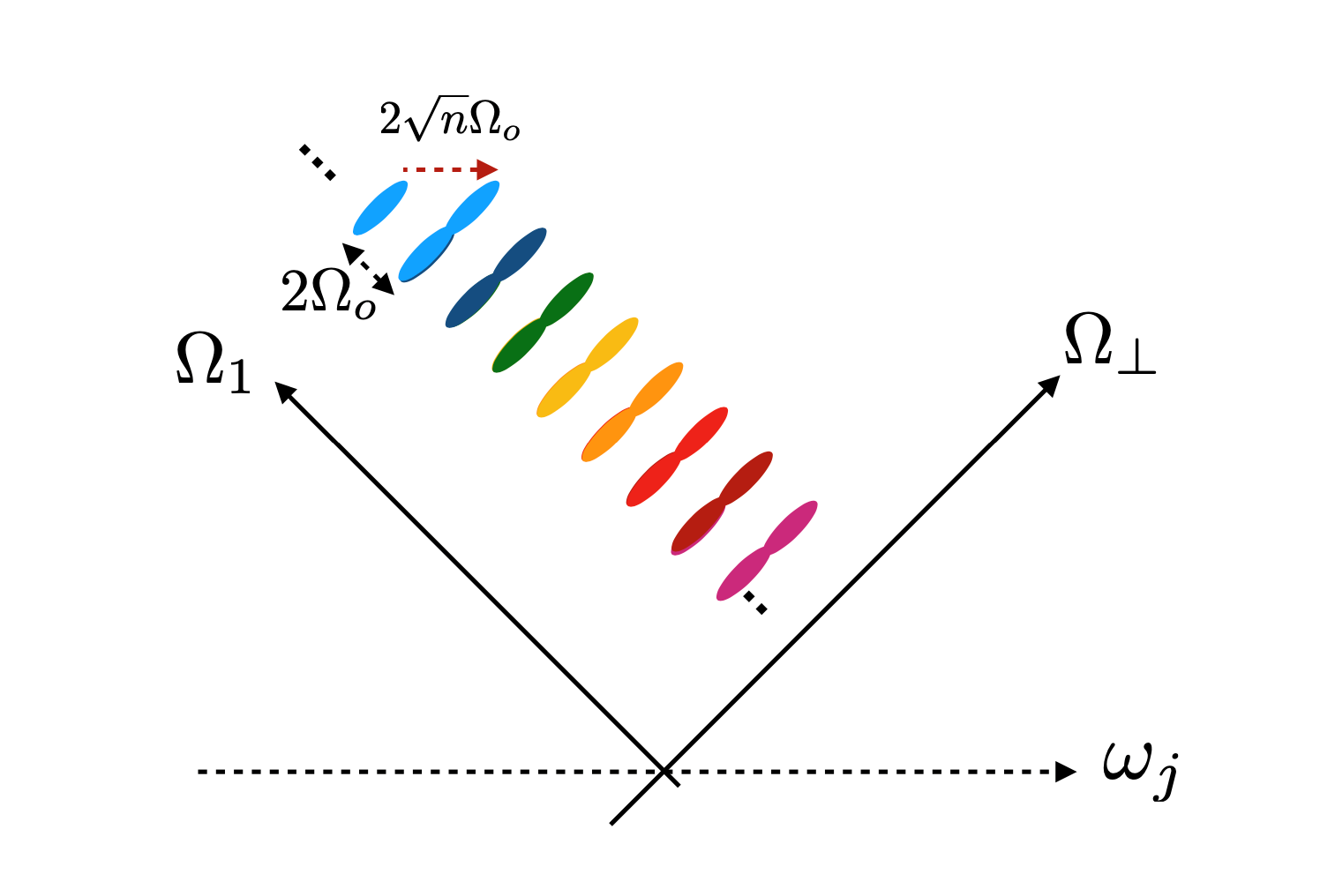Follow us on Google News (click on ☆)
Of all the mediums capable of transmitting information, light is undoubtedly the fastest, and using its quantum properties can additionally make it an unconditionally secure means of communication. Encoding quantum information in light involves defining quantum bits, or qubits, the fundamental building blocks of quantum computation.

Figure: Quantum information is encoded in the collective variables of photons (such as the average frequency of the photons) in the form of a frequency comb (here, the variable Ω1). Other collective variables (grouped in the variable Ω⊥) do not carry information and are not measured. Thus, the effects of displacement (noise) of a photon have a smaller effect on the comb, making it more resilient to disturbances. This effect decreases as the number of photons in the comb increases, as it depends on the inverse of this quantity.
© P. Milman.
However, whether in communication or quantum computing, quantum information is extraordinarily fragile, and manipulation errors, photon loss, or coupling between light and parasitic fields can destroy the quantum information.
To counter these effects, researchers in computer science and physics have developed strategies such as quantum error-correcting codes. Inspired by their classical counterparts, quantum codes rely on redundancy by encoding information into quantum states comprising multiple qubits (instead of one) and measuring their collective properties, such as their parity.
In the field of quantum optics, these codes depend on producing complex states that provide information on the degradation of the information they carry when measured cleverly. Experimentally realizing such states is challenging, despite their importance and interest.
In recent work, researchers from CNRS and the Universities of Paris-Diderot and Paris-Saclay at the Laboratoire Matériaux et Phénomènes Quantiques (MPQ, CNRS / Université Paris Cité) have shown that non-linear devices that convert a photon from a laser beam into a pair of "twin" photons, entangled in frequency, naturally produce a state robust to errors and that can be corrected when perturbed. Indeed, the non-linear device that permits photon conversion creates a collective frequency comb where all photons are entangled when placed in an optical cavity (see figure).
By focusing on the collective variables of this system (such as the average frequency of the photons), it is possible to view this comb as an error-correcting code. Devices generating photon pairs with such properties - which are, to date, the largest photonic states allowing error correction in quantum optics - exist in various laboratories.
These results pave the way for developing experimental tools that allow manipulation of these states on a larger scale and their use in applications such as quantum communications. They are published in Physical Review Letters.
References:
Gottesman-Kitaev-Preskill encoding in continuous modal variables of single photons, Éloi Descamps, Arne Keller and Pérola Milman, Physical Review Letters, published on April 26, 2024.
Doi: 10.1103/PhysRevLett.132.170601
Open archive: arXiv